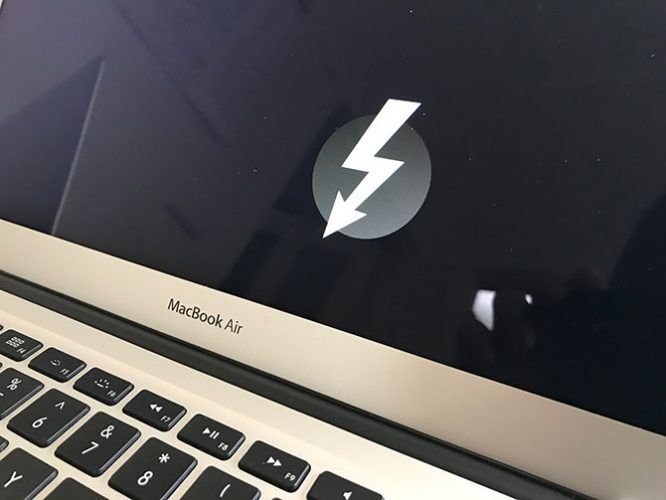Mac Os Startup Disk Missing Boot Camp
If you (a) own an Intel-based Mac, and (b) have installed Windows on it via Apple’s Boot Camp, then you’re familiar with how you tell your Mac whether to boot into OS X or Windows: just hold. Jun 23, 2010 However, you can see the Mac partition as a choice in the Startup Disk panel. It provides exactly the same 'look' at the boot partitions as the Startup Disk pane in OS X System Preferences. The Startup Disk.
- Mac Os Startup Disk Missing Boot Camp Windows 7
- Mac Os Startup Disk Missing Boot Camp 2017
- Mac Os Startup Disk Missing Boot Camp Windows 7
These advanced steps are primarily for system administrators and others who are familiar with the command line. You don't need a bootable installer to upgrade macOS or reinstall macOS, but it can be useful when you want to install on multiple computers without downloading the installer each time.
Download macOS
May 25, 2011 Boot Camp installed. My mac OS is gone? Only Windows shows?? I installed bootcamp, set my mac and my windows partition space, restarted my mac, and tried to install xp. Even when i select delete in startup it only shows windows partition. Also tried to change the boot disc. The startup disk cannot be partitioned or restored to a single partition. The startup disk must be formatted as as single Mac OS Extended (Journaled) volume or already partitioned by Boot Camp Assistant for installing Windows.
Aug 24, 2015 A startup disk is a partition of a drive or a volume that contains a usable operating system. Your startup disk doesn’t have to contain macOS. For example, your Mac can boot directly into Windows if you’re using Boot Camp. 'C:Program FilesBoot CampBootcamp.exe' -StartupDisk 'Macintosh HD' Depending on the version of Windows and the name of your Mac startup disk you may need to tailor it a bit for your setup.
Mac Os Startup Disk Missing Boot Camp Windows 7
Find the appropriate download link in the upgrade instructions for each macOS version:
If you need Auto-Tune’s world standard pitch correction, but not Auto-Tune 7’s time manipulation or other new features (click for a quick comparison of Auto-Tune features), then Auto-Tune Evo is the plug-in for you. Free professional auto tune software.
macOS Catalina, macOS Mojave, ormacOS High Sierra
Installers for each of these macOS versions download directly to your Applications folder as an app named Install macOS Catalina, Install macOS Mojave, or Install macOS High Sierra. If the installer opens after downloading, quit it without continuing installation. Important: To get the correct installer, download from a Mac that is using macOS Sierra 10.12.5 or later, or El Capitan 10.11.6. Enterprise administrators, please download from Apple, not a locally hosted software-update server.
OS X El Capitan
El Capitan downloads as a disk image. On a Mac that is compatible with El Capitan, open the disk image and run the installer within, named InstallMacOSX.pkg. It installs an app named Install OS X El Capitan into your Applications folder. You will create the bootable installer from this app, not from the disk image or .pkg installer.
Use the 'createinstallmedia' command in Terminal

- Connect the USB flash drive or other volume that you're using for the bootable installer. Make sure that it has at least 12GB of available storage and is formatted as Mac OS Extended.
- Open Terminal, which is in the Utilities folder of your Applications folder.
- Type or paste one of the following commands in Terminal. These assume that the installer is still in your Applications folder, and MyVolume is the name of the USB flash drive or other volume you're using. If it has a different name, replace
MyVolumein these commands with the name of your volume.
Catalina:*
Mojave:*
High Sierra:*
El Capitan: - Press Return after typing the command.
- When prompted, type your administrator password and press Return again. Terminal doesn't show any characters as you type your password.
- When prompted, type
Yto confirm that you want to erase the volume, then press Return. Terminal shows the progress as the bootable installer is created. - When Terminal says that it's done, the volume will have the same name as the installer you downloaded, such as Install macOS Catalina. You can now quit Terminal and eject the volume.
* If your Mac is using macOS Sierra or earlier, include the --applicationpath argument, similar to the way this argument is used in the command for El Capitan.
Mac Os Startup Disk Missing Boot Camp 2017
Use the bootable installer
After creating the bootable installer, follow these steps to use it:
- Plug the bootable installer into a compatible Mac.
- Use Startup Manager or Startup Disk preferences to select the bootable installer as the startup disk, then start up from it. Your Mac will start up to macOS Recovery.
Learn about selecting a startup disk, including what to do if your Mac doesn't start up from it. - Choose your language, if prompted.
- A bootable installer doesn't download macOS from the Internet, but it does require the Internet to get information specific to your Mac model, such as firmware updates. If you need to connect to a Wi-Fi network, use the Wi-Fi menu in the menu bar.
- Select Install macOS (or Install OS X) from the Utilities window, then click Continue and follow the onscreen instructions.
Learn more
For more information about the createinstallmedia command and the arguments that you can use with it, make sure that the macOS installer is in your Applications folder, then enter this path in Terminal:
Catalina:
Mojave:
Mac Os Startup Disk Missing Boot Camp Windows 7

Kontakt 5 vst download free. High Sierra:
El Capitan: